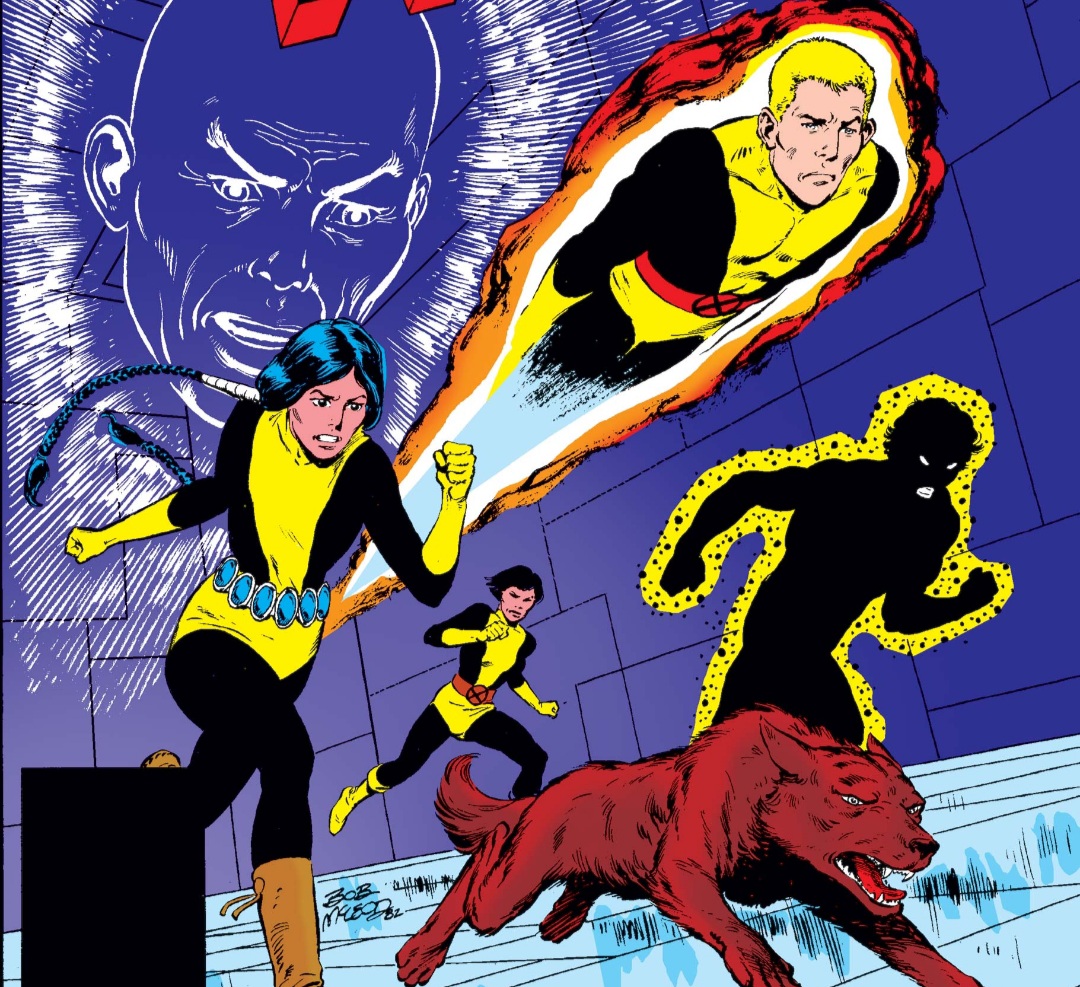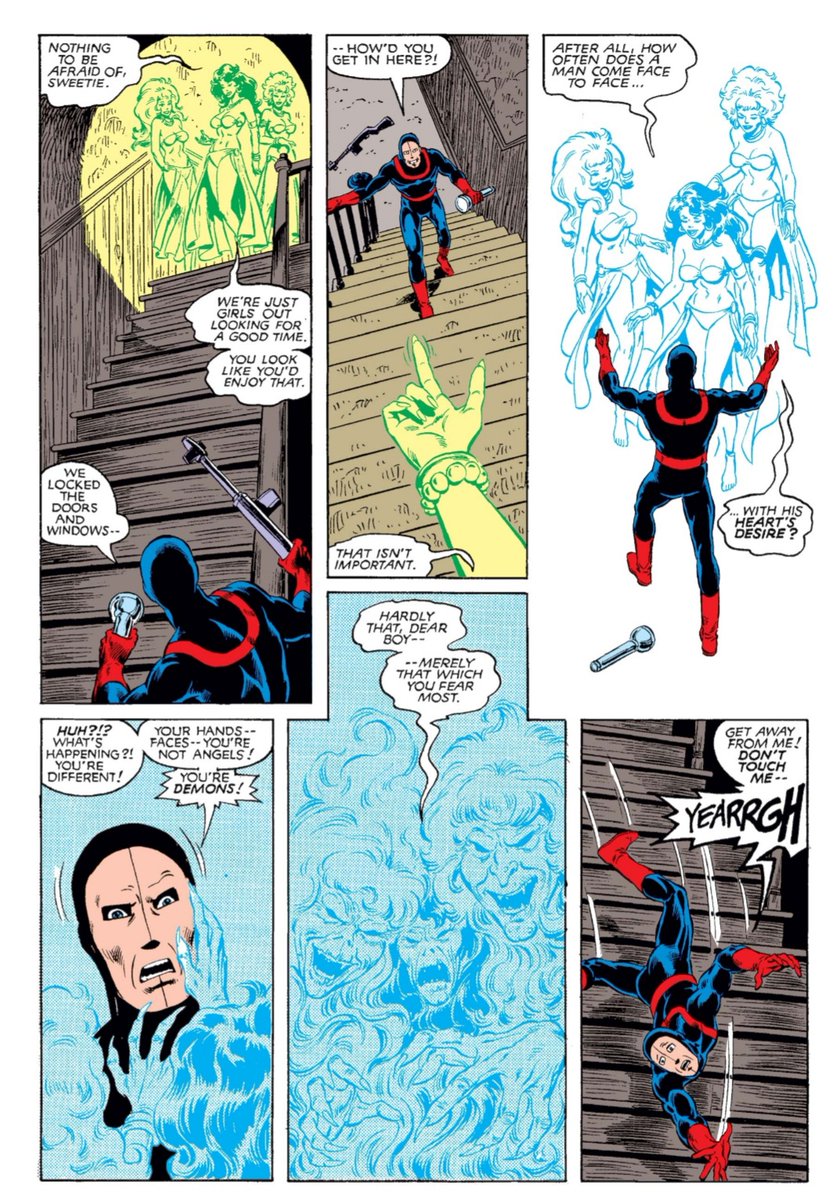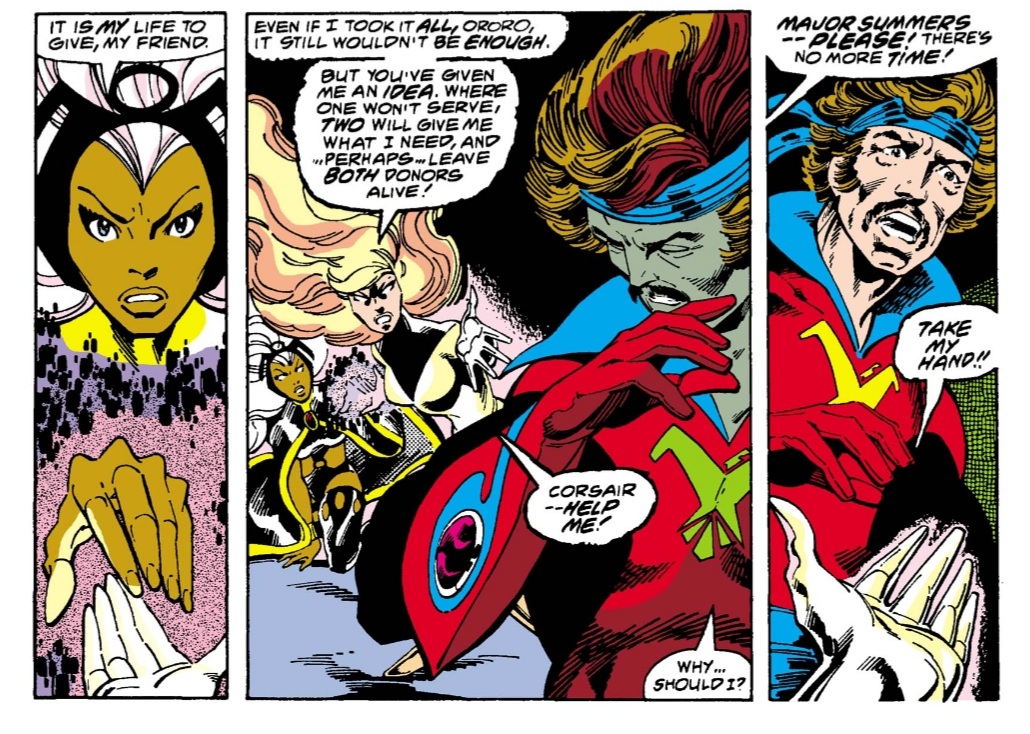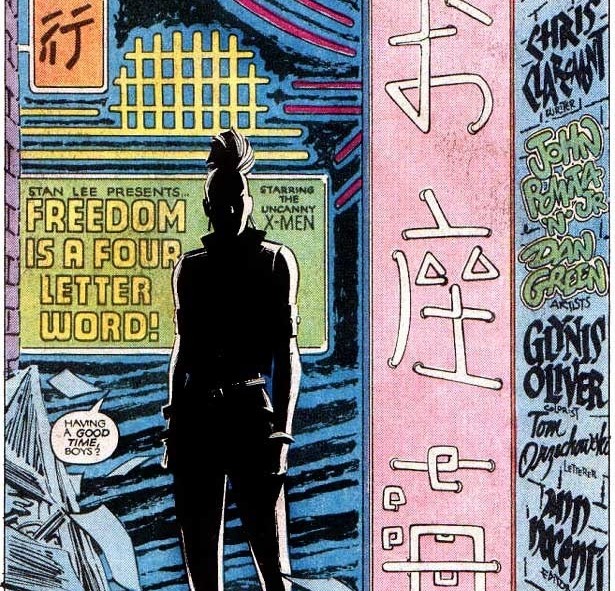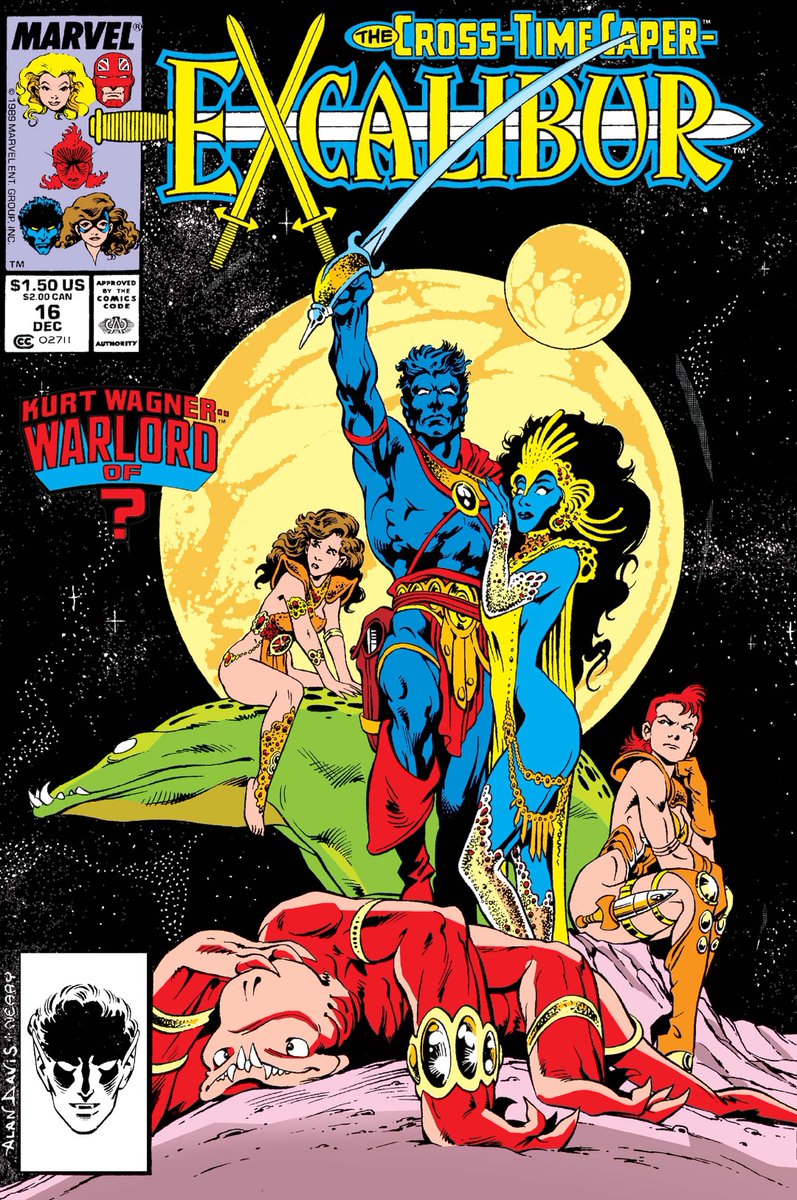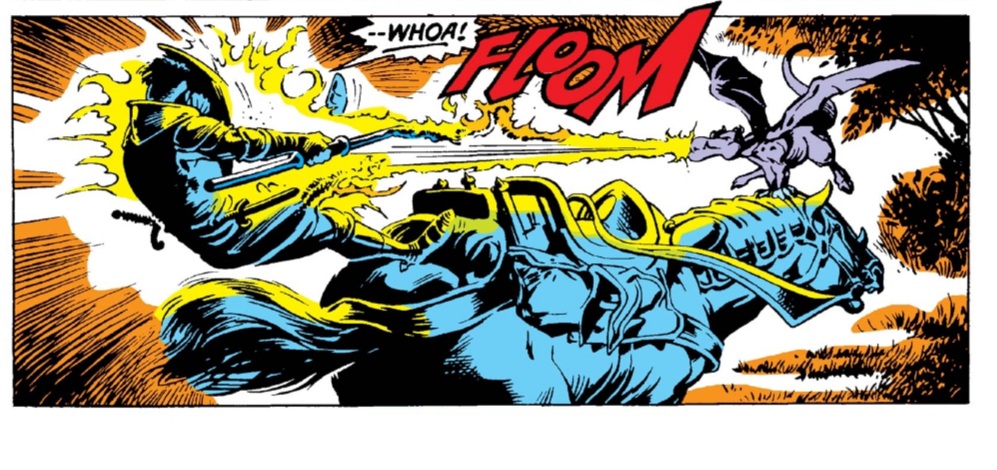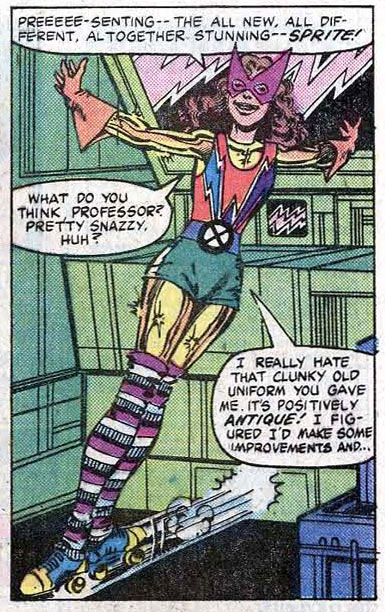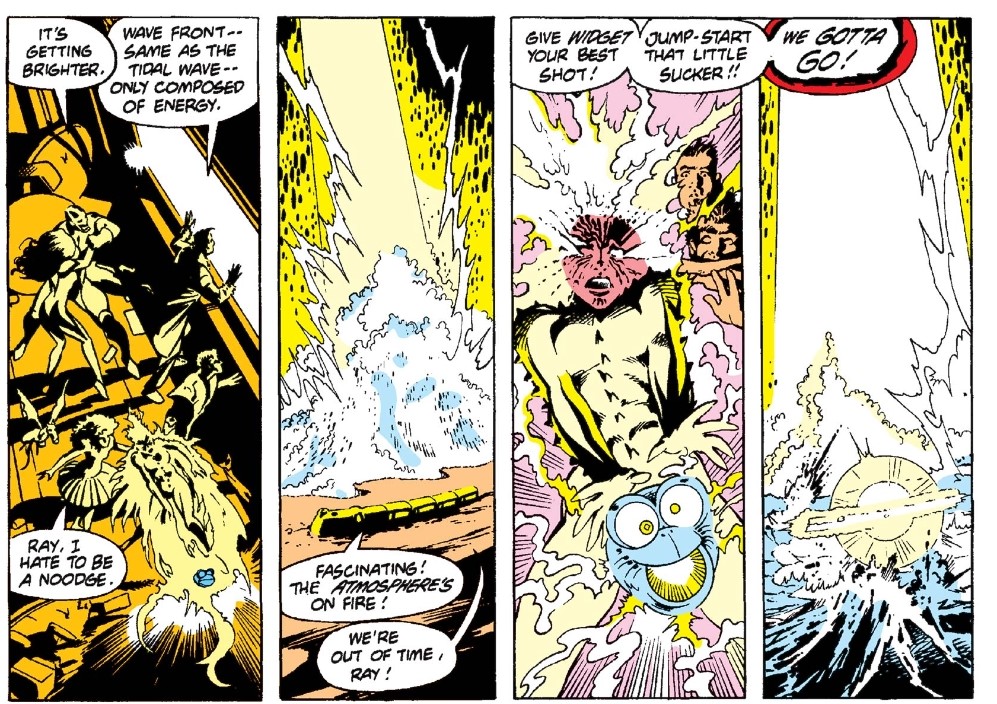
One of the ways that Claremont defines Jean as a 2nd wave feminist superhero is through her simple, consistent reluctance to fall into a domestic relationship against her wishes and to assert, instead, her independence and superheroism. #xmen 1/13 

Betty Friedan is a major catalyst of American 2nd wave feminism who speaks to the confining effect of women’s forced domesticity. “Why should women accept this picture of a half-life, instead of a share in the whole of human destiny?” 2/13 

We see Jean challenge this half-life early on with her assertion of power and agency in sacrificing herself to save her peers. Though a civilian at this time, she refuses Scott’s attempt to shield her and claims the role of martyr for herself – quite authoritatively. 3/13 

We see it again in the Dark Phoenix Saga when she refuses to be subjugated by Mastermind within a culture that – through virtue of its dress and its colonialist aesthetic – makes it clear that women serve only subordinate roles. She also dominates Scott sexually at this time 4/13 

As Dark Phoenix, Jean’s dialogue speaks metaphorically to this theme of defying domestic half-life. “I didn’t want this, my dear ones – and yet, it was something I had to do. By striking you down, I cut myself of the last ties binding me to the person I was. The life I led.” 5/13 
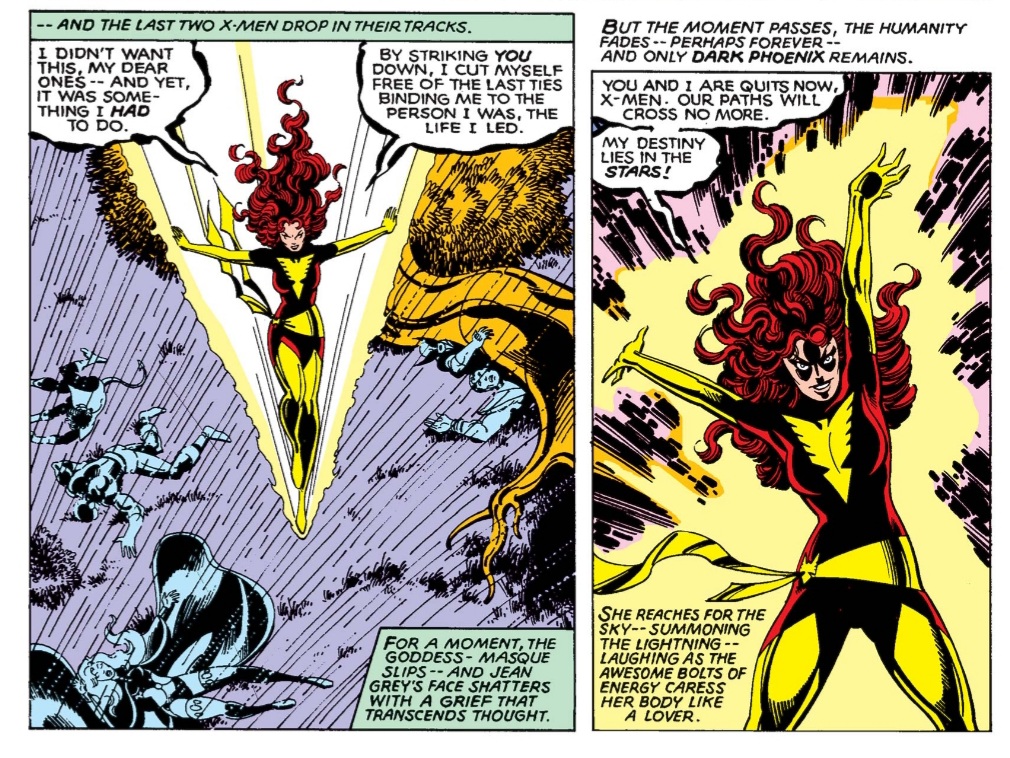
We can find similar sentiment expressed literally in Classic X-Men #1 when she explains to Prof X why she is leaving the team: “There’s so much I want to see and do…I find myself thinking of this house as a cloister, even a prison. I’m bound here. Trapped.” 6/13 
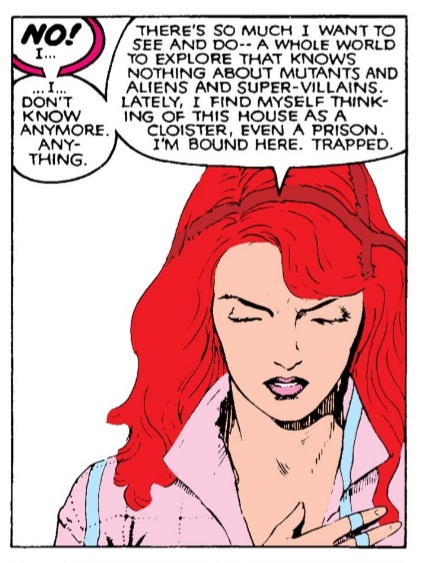
Upon her post-mortem return, she’s written primarily by Louise Simonson in the pages of X-Factor, but Claremont does occasionally handle the character (primarily in guest appearances) such as we see in UXM #261 where Jean tours the mansion ruins and finds an old photo. 7/13 

Scott has proposed and Jean is reluctant. “Now it’s my turn. Scott wants to marry me! Once – not so terribly long ago – that would have made me the happiest of girls. Times I thought the way we fit together – it was almost as though things were pre-ordained.” 8/13 

In Days of Future Present, Jean outright rejects Rachel’s claim as her daughter. It’s genuinely heartbreaking from Rachel’s perspective, but Jean’s choice to preserve her agency makes sense for that character’s fervent desire to be free of forced domestic obligation. 9/13 

When Sue Richards compliments Jean on Rachel, Jean defies the forced application of the maternal role on her (one appropriately thrown at her by Marvel’s most famous wife and mother). “Parent?! I’m not even married….” 10/13 

“…And out of nowhere I’m face to face with the product of my life to come!...It’s like all the pieces of my life are locked into place without me having the slightest say!” 11/13 

The point here is that our culture (as Friedan articulates) bombards women with images of happiness achieved only “as her children's mother, her husband's wife” (Friedan) and even as the entire comics community clamoured for Jean to just marry Cyclops, she hesitates. 12/13 

She also sometimes expresses fervent desire to be a wife and mom, but her skepticism toward that role and what it would cost her shows an important understanding of the problematic enforcement of domestic roles onto women. 13/13 

• • •
Missing some Tweet in this thread? You can try to
force a refresh


